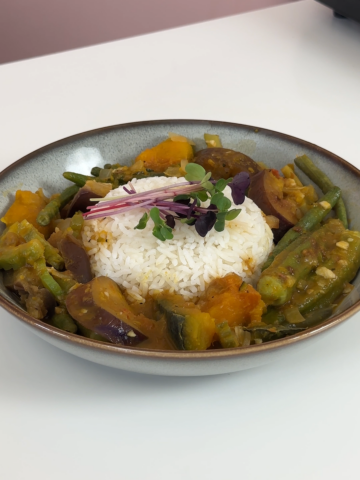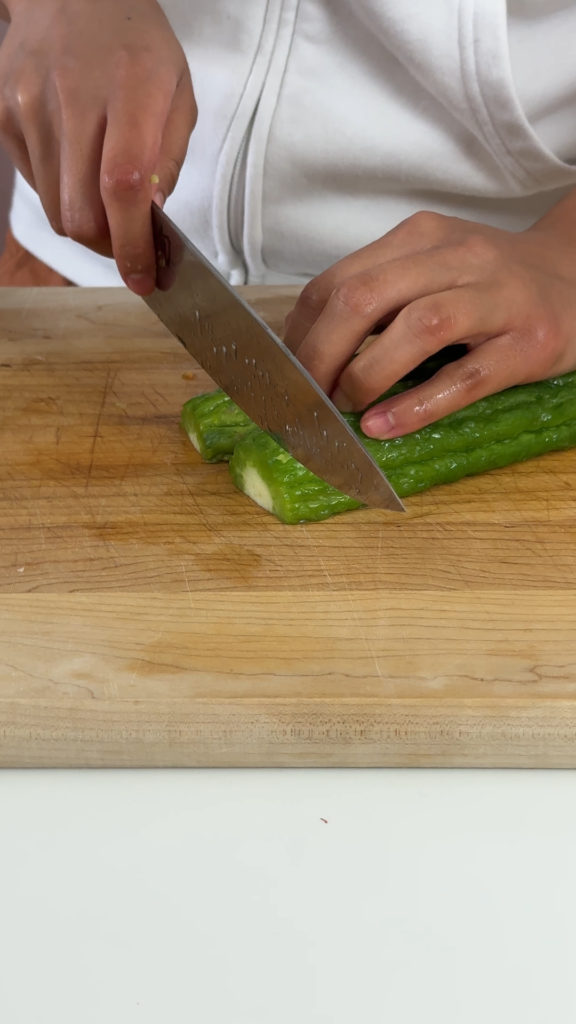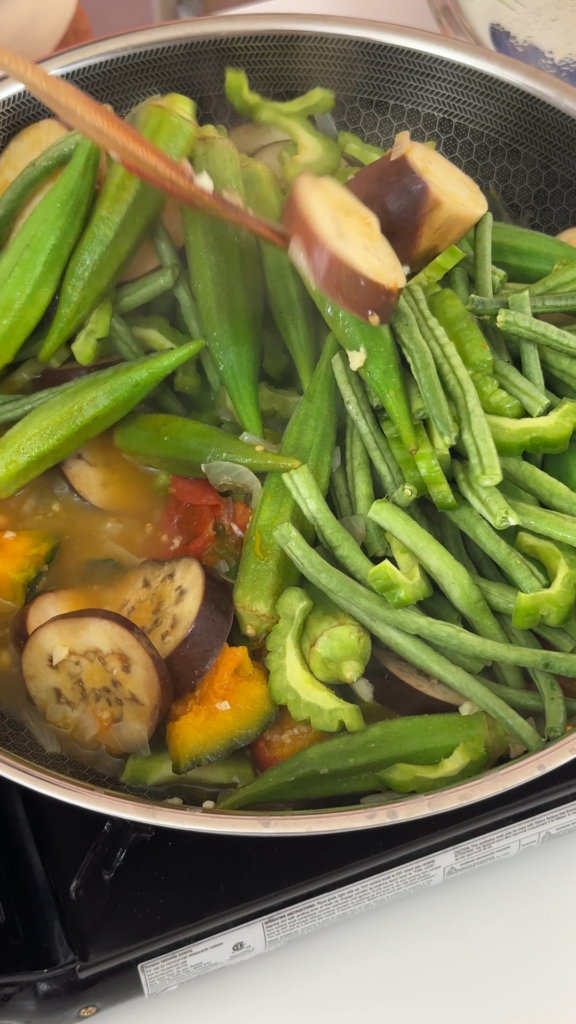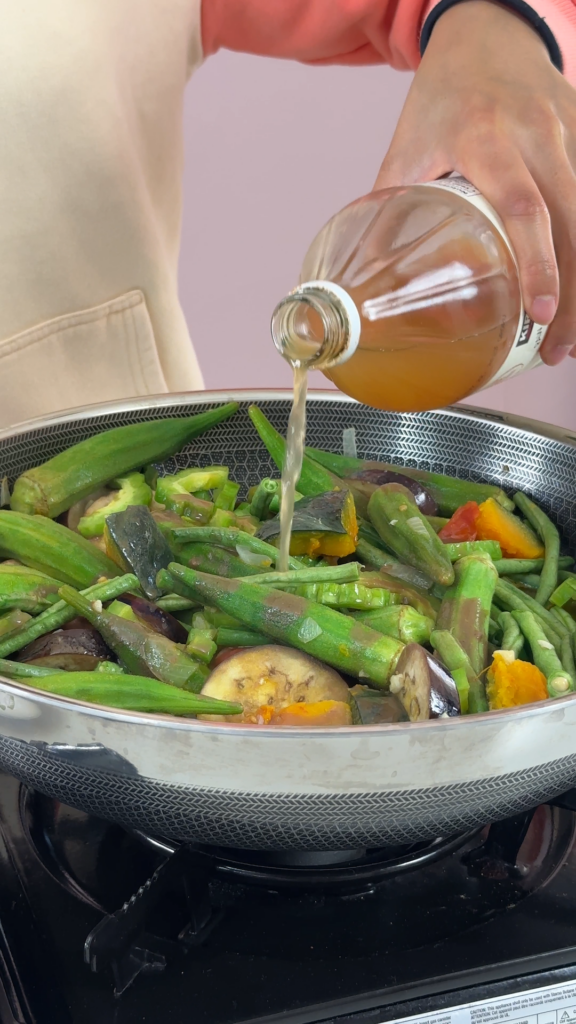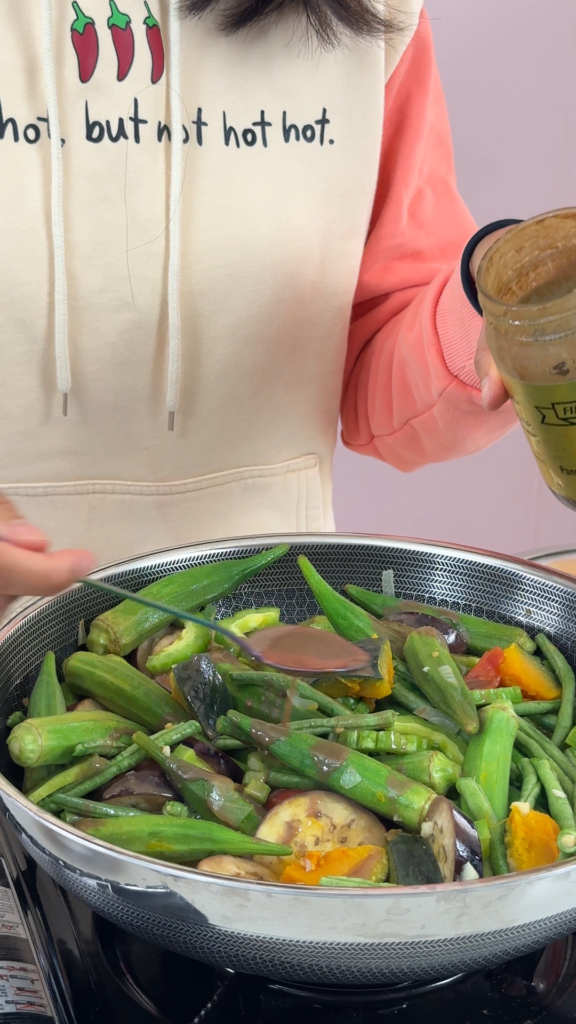Bursting with a harmonious blend of flavors, this traditional Filipino vegetable stew is a true testament to the rich heritage and diverse ingredients of the Philippines
Pinakbet, also known as Pakbet or Pinakbet Tagalog, showcases an exquisite medley of fresh vegetables cooked in a savory sauce, often accompanied by succulent pieces of meat or seafood. With its origins tracing back to the northern regions of the Philippines, this beloved dish has become a staple in Filipino households and an essential part of festive gatherings and everyday meals alike.
The essence of Pinakbet lies in the impeccable balance between simplicity and complexity. Locally sourced vegetables such as bitter melon (ampalaya), eggplant, okra, squash, and string beans form the foundation of this culinary masterpiece. These ingredients are then complemented by an array of flavorsome elements, including shrimp paste (bagoong), garlic, ginger, and aromatic spices, which infuse the dish with depth and character.
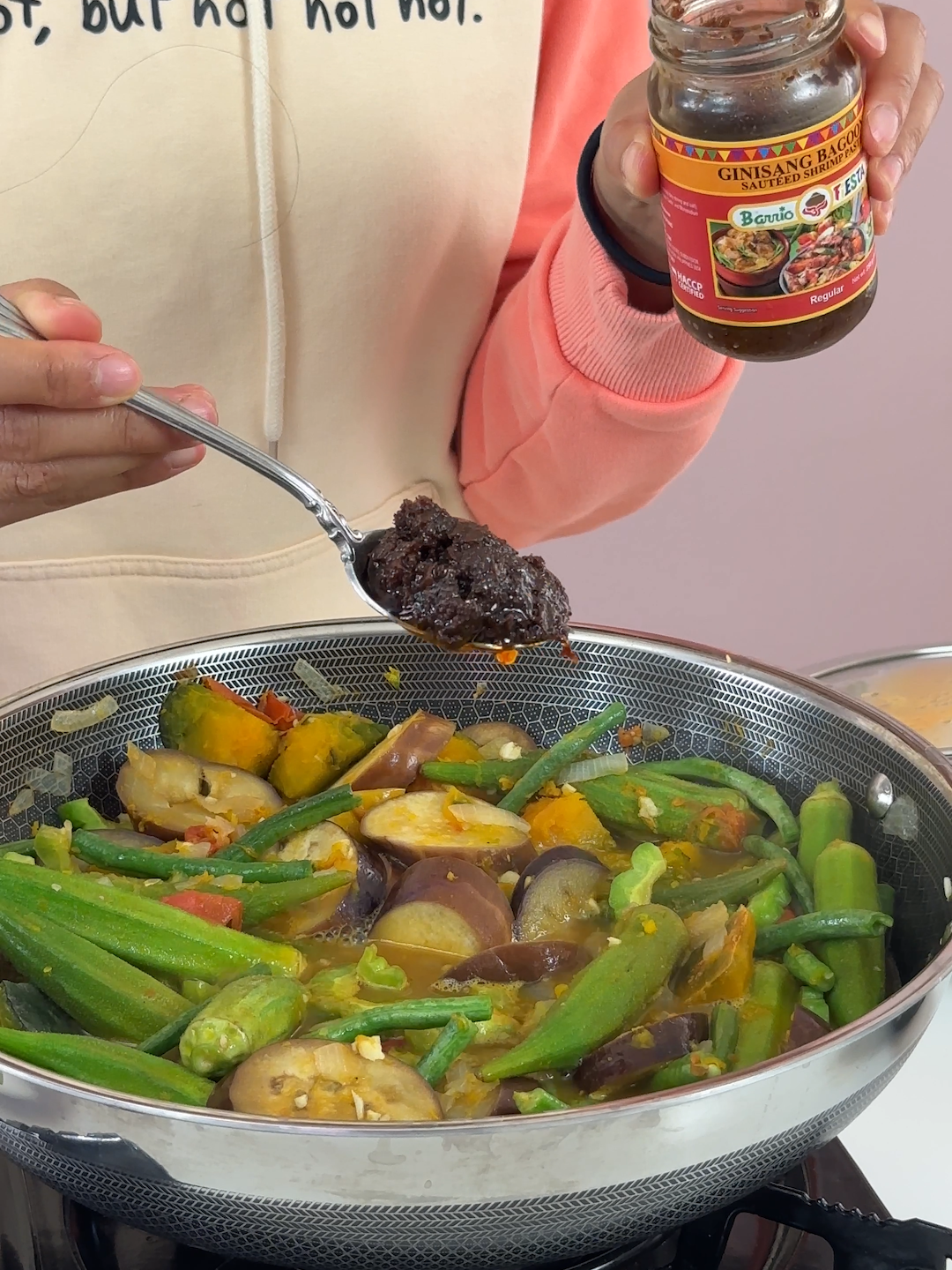
The beauty of Pinakbet lies not only in its enticing flavors but also in its versatility. While the classic recipe traditionally includes pork or shrimp, variations abound, allowing for customization based on personal preferences and dietary needs. In this recipe, I didn’t use any meat just because I wanted a purely veggie dish (but not vegetarian due to the fish and shrimp paste).
So, prepare to embark on a culinary adventure as we unravel the secrets of Pinakbet. Immerse yourself in the vibrant colors, enticing aromas, and exquisite flavors that make this Filipino dish an absolute delight for the senses. Let’s gather our ingredients, wield our kitchen utensils, and dive into the cooking process, as we unveil the steps to create a memorable, heartwarming pot of Pinakbet that will leave you craving for more.
Ingredients
- half a white onion
- tomatoes. 1 large or 5 small
- 5 garlic cloves, a few cloves
- lots of okra, about 25
- 1 bitter melon
- 1 long japanese eggplant
- 1/2 kabocha squash
- long string beans
- 1 tablespoon bagoong aka shrimp paste, to taste
- 2 cups chicken stock
- 1 tablespoon fish paste, to taste
- 1 tablespoon apple cider vinegar, to taste
Directions
1. Prep all the veggies! Dice the onion. Slice tomato into large chunks. Mince garlic. Remove seeds from bitter melon and slice into half rounds. Slice eggplant into rounds. Cut kabocha into cubes. Slice string beans into 2 inch pieces.
2. Put a bit of cooking oil into a large pan. Brown the onions, garlic and tomato. Smash tomato a little to help them break down.
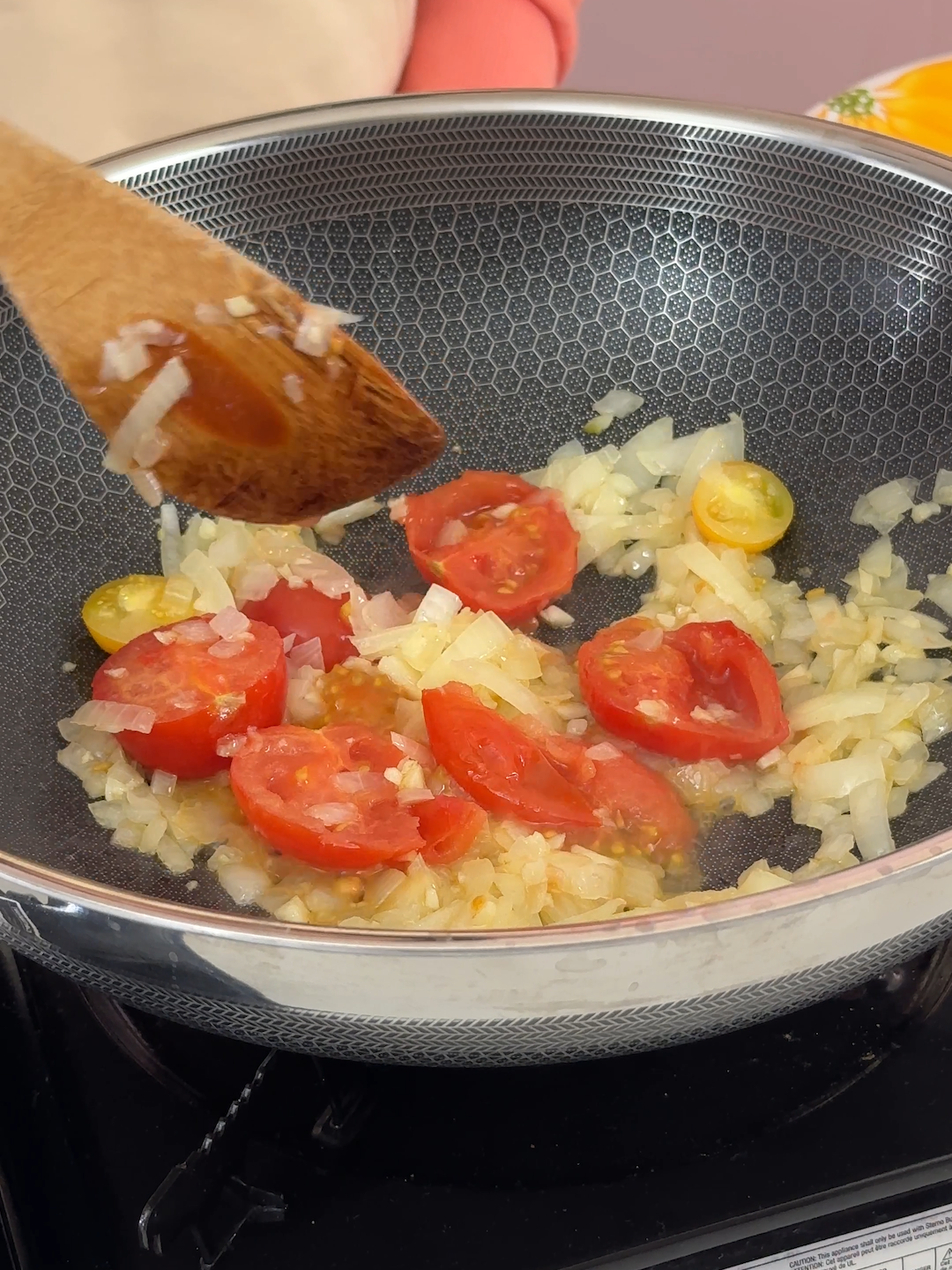
3. Add kabocha and chicken stock. Cover and let simmer for at least 5 minutes or until the kabocha is softened.
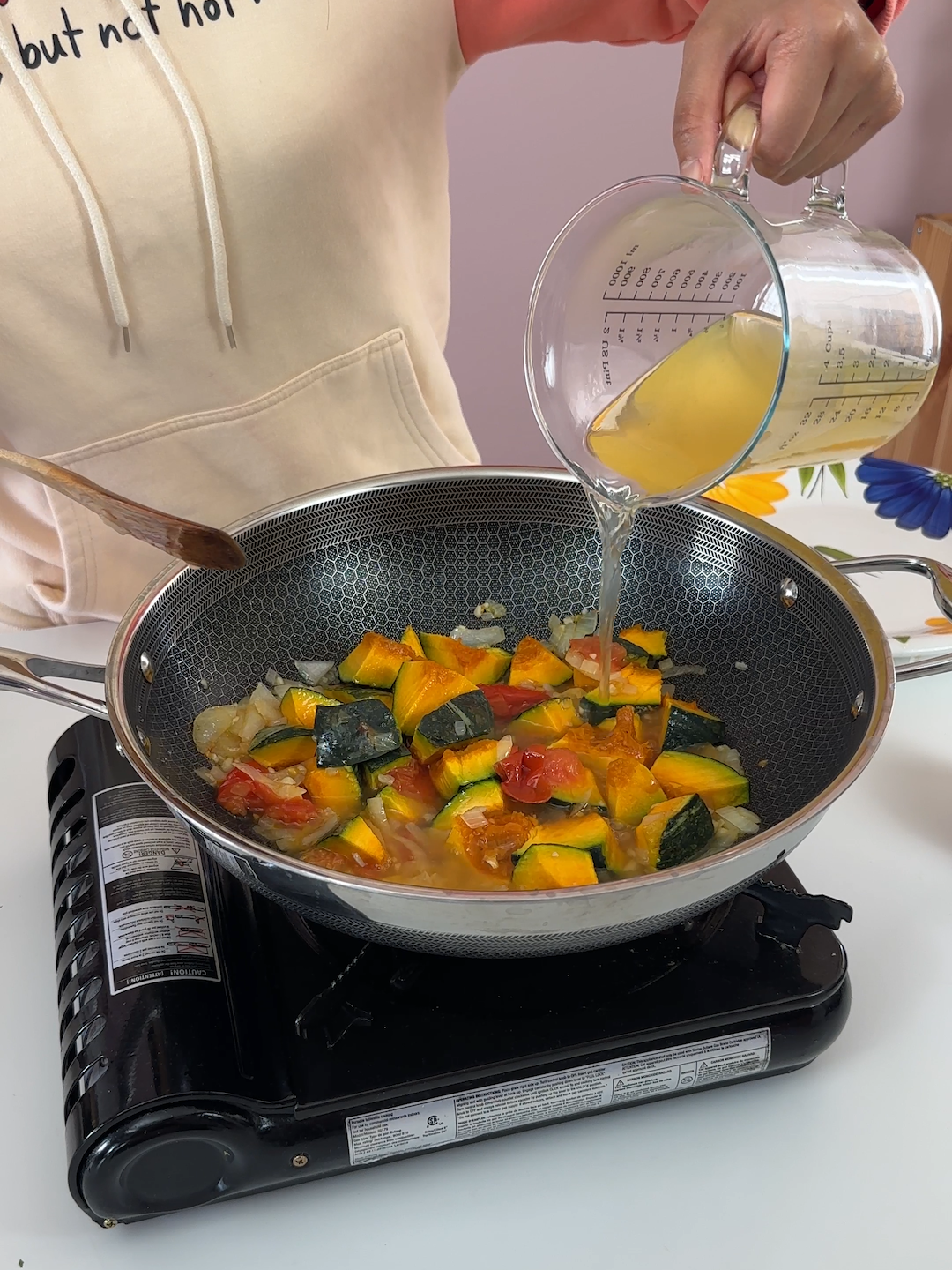
4. Add eggplant, okra, string beans, and bitter melon. Also add fish paste, shrimp paste and apple cider vinegar to taste.
5. Let simmer until all veggies are soft. Serve with rice!
Questions
What is Pinakbet and how is it made?
Pinakbet is a traditional Filipino vegetable stew made with a variety of vegetables such as bitter melon, eggplant, okra, squash, and string beans, cooked in a savory sauce. It is often flavored with shrimp paste, garlic, ginger, and spices.
What are the essential ingredients for Pinakbet?
The essential ingredients for Pinakbet include bitter melon, eggplant, okra, squash, string beans, shrimp paste (bagoong), garlic, ginger, onions, tomatoes, and various spices.
Can Pinakbet be made without shrimp paste for vegetarian or vegan options?
Yes, Pinakbet can be easily adapted for vegetarian or vegan diets by omitting the shrimp paste and using vegetarian alternatives for umami flavor, such as soy sauce or miso.
How long does it take to cook Pinakbet?
The cooking time for Pinakbet can vary, but it typically takes around 30-45 minutes to prepare and cook the dish.
What are some popular variations of Pinakbet?
Popular variations of Pinakbet include adding pork, shrimp, or other seafood to the dish for added flavor and protein. Some recipes also include additional vegetables like tomatoes, bell peppers, or ampalaya leaves.
Can Pinakbet be made in advance and reheated?
Yes, Pinakbet can be made in advance and reheated. In fact, many people believe that the flavors of Pinakbet improve after resting for some time, allowing the ingredients to meld together.
How to serve Pinakbet?
Pinakbet is commonly served with steamed rice as a main dish. It can also be paired with other Filipino dishes such as grilled meats or fish, and enjoyed as part of a complete meal.
Are there any health benefits associated with Pinakbet?
Pinakbet is a nutritious dish packed with a variety of vegetables, offering vitamins, minerals, and dietary fiber. It can be a good source of antioxidants and is low in fat, making it a healthy choice for those seeking a balanced diet.
Can Pinakbet be customized to suit personal taste preferences?
Absolutely! Pinakbet is a versatile dish that can be customized to suit individual taste preferences. You can adjust the types and amounts of vegetables, spices, and even the level of spiciness according to your liking.
Are there any tips for selecting the freshest vegetables for Pinakbet?
When selecting vegetables for Pinakbet, choose those that are firm, vibrant in color, and free from blemishes. Opt for locally sourced and seasonal vegetables for the best flavor and freshness.
Recipe
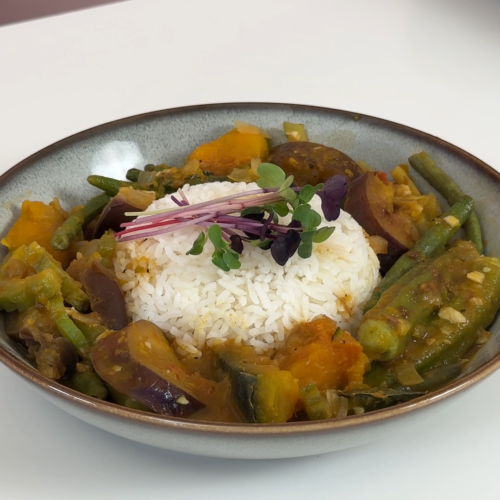
Pinakbet
Ingredients
- ½ white onion
- tomatoes 1 large or 5 small
- 25 okra
- 1 bitter melon
- 1 long japanese eggplant
- ½ kabocha squash
- long string beans
- 1 tablespoon bagoong aka shrimp paste to taste
- 2 cups chicken stock
- 1 tablespoon fish paste to taste
- 1 tablespoon apple cider vinegar to taste
Instructions
- Prep all the veggies! Dice the onion. Slice tomato into large chunks. Mince garlic. Remove seeds from bitter melon and slice into half rounds. Slice eggplant into rounds. Cut kabocha into cubes. Slice string beans into 2 inch pieces.
- Put a bit of cooking oil into a large pan. Brown the onions, garlic and tomato. Smash tomato a little to help them break down.
- Add kabocha and chicken stock. Cover and let simmer for at least 5 minutes or until the kabocha is softened.
- Add eggplant, okra, string beans, and bitter melon. Also add fish paste, shrimp paste and apple cider vinegar to taste.
- Let simmer until all veggies are soft. Serve with rice!

